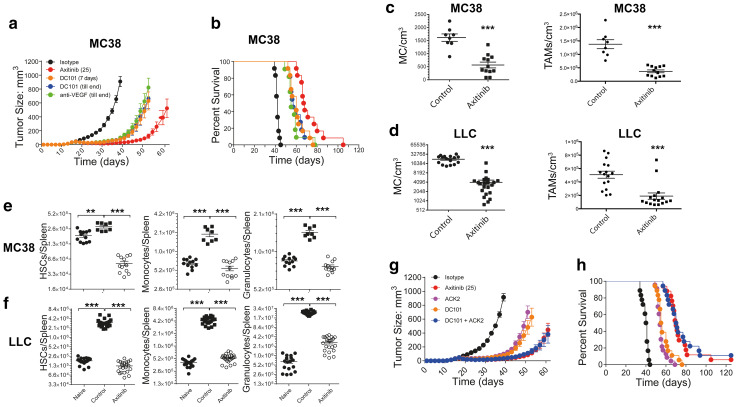Fig. 1.
Axitinib inhibits cancer growth not only by targeting angiogenesis, but also by modulating myeloid cells. C57BL/6 mice bearing established MC38 tumors were treated with the indicated agents. Cumulative cancer growth (a) and the corresponding animal survival (b) are depicted as pooled data from two independent experiments (n = 11–12). Tumor resident mast cell densities and TAMs within the tumor-infiltrating immune cells are depicted for the MC38 (c) and the LLC1 (d) tumor models. Data are depicted as pooled data from four independent experiments (n = 8–12) for the MC38 tumor model (c) and as pooled data from two independent experiments (n = 17–22) for the LLC1 tumor model (d). MC38 (e) or LLC1 (f) tumor-bearing animals were treated with axitinib or carrier for 7 consecutive days. Naïve (untreated) animals were used as additional controls. Upon completion of the treatment animals were euthanized and spleen cell populations (HSCs, monocytes and granulocytes) analyzed using flow cytometry. Cell numbers/spleen are depicted as pooled data from four independent experiments (n = 17–22) for the MC38 cancer model (e) and as pooled data from two independent experiments (n = 8–12) for the LLC1 cancer model (f). C57BL/6 mice bearing established MC38 tumors were treated with the indicated agents. Cumulative tumor growth (g) and the corresponding animal survival (h) are depicted as pooled data from three independent experiments (n = 17–18). **p < 0.01, ***p < 0.001 determined by Student’s t test. Data are presented as mean ± SD

